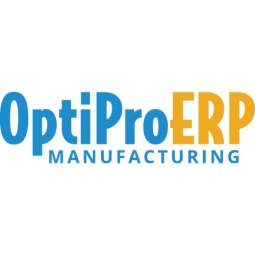Download PDF
Western Filament: Enhancing Manufacturing Processes with IoT
Technology Category
- Functional Applications - Enterprise Resource Planning Systems (ERP)
- Functional Applications - Manufacturing Execution Systems (MES)
Applicable Industries
- Aerospace
- Automotive
Use Cases
- Additive Manufacturing
- Manufacturing Process Simulation
Services
- System Integration
The Challenge
Western Filament, a Colorado-based company that specializes in the production of high-quality textile products for various industries, was facing significant challenges with its legacy ERP system. The system, which relied on 'bolt-on' data sources, was unable to provide advanced scheduling, routing, cost centers, work centers, or work-in-process visibility. As the company grew, it required more information and manufacturing functionality from its ERP system. The lack of these features was hindering the company's ability to effectively manage its operations and provide a superior customer experience. The company was deemed essential under the Defense Production Act during the COVID-19 pandemic, and it was looking to reinvest for the future. The management team unanimously agreed that a more robust system was needed to handle their unique business needs.
About The Customer
Western Filament is a textile manufacturing company based in Grand Junction, Colorado. The company specializes in braiding, twisting, coating, and dyeing man-made fiber for various industries including the military, aerospace, automotive, electric motor, and fishing industries. Western Filament prides itself on producing high-quality textile products that are used in the most demanding applications. The company was deemed essential under the Defense Production Act during the COVID-19 pandemic and is committed to reinvesting for the future to continue providing superior products and services to its customers.
The Solution
After evaluating several ERP systems including Sage, JobBoss, and NetSuite, Western Filament chose OptiProERP with SAP Business One. This system was selected for its fully integrated manufacturing and mobility functionality. OptiProERP provided Western Filament with remote access, enabling the team to access the system from anywhere, which was particularly beneficial during the pandemic. The system also offered single system connectivity, which eliminated the need for 'bolt-on' data sources and streamlined the company's operations. Additionally, OptiProERP provided time savings, better work-in-process visibility, more accurate capacity detail, and improved lead times. These features allowed Western Filament to enhance its manufacturing processes and provide a better customer experience.
Operational Impact
Quantitative Benefit
Related Case Studies.

Case Study
Airbus Soars with Wearable Technology
Building an Airbus aircraft involves complex manufacturing processes consisting of thousands of moving parts. Speed and accuracy are critical to business and competitive advantage. Improvements in both would have high impact on Airbus’ bottom line. Airbus wanted to help operators reduce the complexity of assembling cabin seats and decrease the time required to complete this task.

Case Study
Aircraft Predictive Maintenance and Workflow Optimization
First, aircraft manufacturer have trouble monitoring the health of aircraft systems with health prognostics and deliver predictive maintenance insights. Second, aircraft manufacturer wants a solution that can provide an in-context advisory and align job assignments to match technician experience and expertise.

Case Study
Integral Plant Maintenance
Mercedes-Benz and his partner GAZ chose Siemens to be its maintenance partner at a new engine plant in Yaroslavl, Russia. The new plant offers a capacity to manufacture diesel engines for the Russian market, for locally produced Sprinter Classic. In addition to engines for the local market, the Yaroslavl plant will also produce spare parts. Mercedes-Benz Russia and his partner needed a service partner in order to ensure the operation of these lines in a maintenance partnership arrangement. The challenges included coordinating the entire maintenance management operation, in particular inspections, corrective and predictive maintenance activities, and the optimizing spare parts management. Siemens developed a customized maintenance solution that includes all electronic and mechanical maintenance activities (Integral Plant Maintenance).

Case Study
Aerospace & Defense Case Study Airbus
For the development of its new wide-body aircraft, Airbus needed to ensure quality and consistency across all internal and external stakeholders. Airbus had many challenges including a very aggressive development schedule and the need to ramp up production quickly to satisfy their delivery commitments. The lack of communication extended design time and introduced errors that drove up costs.







